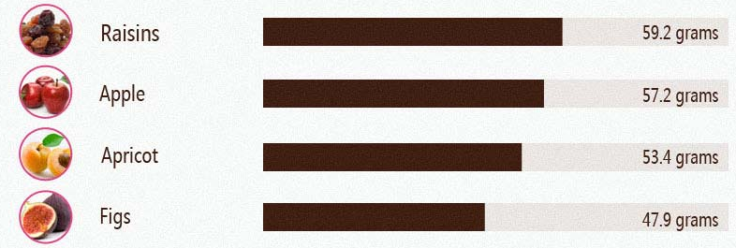Sugar High: Food Labels' Sweet Little Lies About Sugar In Everyday Food

Most of us satisfy our sweet tooth cravings when we indulge in sugar-laden guilty pleasures like cake, cookies, and ice cream. While it’s not a surprise to find a high sugar content in these products, there are everyday foods hiding shockingly high amounts of sugar. The most nutrition-oriented statements on packages of food such as “fat-free,” “100% juice,” or “25% less sugar” can throw us off and make us inadvertently consume an unprecedented amount of sugar dangerous to our health.
Excessive sugar in our diets is not ideal when it comes to healthy living. We consume approximately 500 extra calories a day from sugar worldwide, which is the exact amount needed to be consumed to gain a pound a week. In the U.S., the average adult consumes 22 teaspoons per day while the average child consumes 22 teaspoons a day. This far exceeds the American Heart Association’s recommendation of no more than 9.5 teaspoons of sugar per day.
We may monitor our sugar intake based on the nutrition labels we read on food packages. However, these food labels only serve as a sweet deception to cover the amount of sugar some foods have. Red flag phrases like “100% juice” and brand names that sound weight loss friendly, such as Skinny Cow, aren’t necessarily lower in sugar compared to their non-labeled counterparts. Beverages that boast about being 100 percent juice actually use juice concentrate to give off a sweet flavor, according to a study published in the journal Nutrition. This is seen in the grams of sugar listed in the nutrition facts label.
It is difficult to know how much fructose is in any product, since nutrition labels only tell us the total grams of sugar of the product. “Sugars” on a nutrition label can include sucrose — a combination of glucose and fructose, and lactose and other variations. High-fructose corn syrup, one of the most commonly used cheap sweeteners, derived from corn, can be toxic to your body, since excessive sugar can get shuttled into the body’s cells and store as fat leading to numerous health problems, like obesity and deadly obesity-related diseases.
In an effort to expose the “sweet trap” most of us fall into, Dr. Joseph Mercola, alternative medicine proponent, osteopathic physician, and web entrepreneur, created an infographic to expose the shocking amounts of sugars in common foods. Mercola recommends keeping our consumption of fructose below 25 grams a day. Failure to do so can lead to a variety of health issues, like diabetes and obesity.
Shocking foods include fried fruit raisins, which contain 59.32 grams of sugar. Although choosing raisins over refined grains and processed sugars means you get more fiber, vitamins, and antioxidants, it’s important to pay attention to the amount consumed to prevent high blood sugar. Another everyday food associated with healthy eating is the dressing in salad, which can contain 15.2 grams and up of sugar. Vinaigrettes and other salad dressings already contain plenty of sweetener.
Avoid falling into this sweet but deadly trap and monitor your sugar intake in the everyday foods you consume.



























